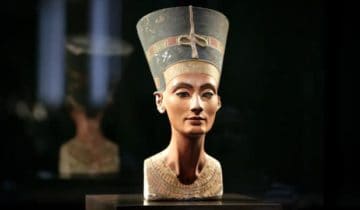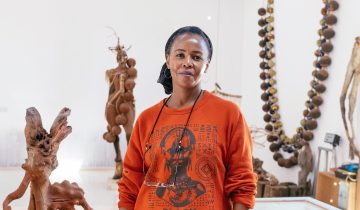Art as a Lifeline: African Art and World Suicide Prevention Day
A gentle breeze blows on this warm September day, carrying with it the weight of a global mission: World Suicide Prevention Day. This annual event serves as a poignant reminder of the importance of mental health awareness and support. It is a day dedicated to shedding light on the shadows of despair that envelop the lives of countless individuals, and a day that urges us all to reach out a hand to those who need it most.
Amidst this solemn occasion, we turn our attention to a kaleidoscope of vibrant colors, patterns, and forms: African Art. With its rich history and diversity, African Art transcends mere aesthetic beauty, acting as a lifeline for emotional expression, community engagement, and cultural identity. In this journal, we shall explore the intricate tapestry that is African Art, woven with threads of resilience and hope, and its potential to serve as a beacon of light in the darkness of mental anguish.
The Psychological Impact of Art
The connection between art and the human psyche runs deep. At its very essence, art has the power to heal, to soothe, and to inspire. Art therapy, for instance, has long been recognized as an effective method of addressing a range of psychological issues, from depression to trauma. Through creative expression, individuals can process complex emotions, untangle knotted thoughts, and gain new perspectives on their experiences. African Art, in particular, provides a unique canvas for personal growth and self-discovery, empowering those who embrace it to build emotional resilience and strength.
Consider the story of Mpho, a young South African woman who battled with depression and anxiety following a traumatic event in her life. Traditional therapy failed to provide Mpho with the solace she sought, but it was through African Art that she found her voice. Through the medium of beadwork, Mpho crafted intricate patterns, allowing her to express her inner turmoil and find a sense of calm amidst the chaos. Mpho’s journey is but one example of the transformative power of African Art in the realm of mental health.
African Art and Community Engagement
Art is not merely a solitary pursuit; it also has the power to bring people together, fostering connections and conversations that might otherwise never occur. In the context of mental health and suicide prevention, African Art can serve as a powerful platform for dialogue, encouraging discussion and understanding around these difficult topics. By addressing the stigma surrounding mental health and breaking down barriers of silence, art can play a crucial role in fostering a sense of community and providing a safe space for those struggling with their mental wellbeing.
Take, for example, the Nigeria-based organization “Art for a Cause,” which harnesses the power of African Art to raise awareness about mental health issues and promote social change. Through community art projects, exhibitions, and events, “Art for a Cause” encourages individuals to engage with one another, share their stories, and develop a sense of empathy and understanding. In doing so, the organization creates an environment in which those affected by mental health issues feel supported, validated, and heard.
Cultural Connections and Identity through African Art
The importance of cultural heritage in mental wellbeing cannot be overstated. A strong connection to one’s roots can provide a sense of identity, purpose, and belonging, all of which are essential components of a healthy, well-rounded psyche. African Art, in all its myriad forms, offers a unique opportunity to engage with the rich tapestry of African culture, strengthening these crucial connections.
Take the work of El Anatsui, a Ghanaian artist renowned for his large-scale sculptures created from discarded materials such as bottle caps and aluminum. El Anatsui’s art speaks to the interconnectedness of African history, culture, and tradition, weaving a narrative that resonates with viewers on a deeply personal level. By engaging with African Art in this way, individuals can foster a sense of belonging and develop a more robust personal identity, ultimately contributing to improved mental health and wellbeing.
Moreover, African Art has the power to impact global perspectives, bridging the gap between diverse communities and fostering understanding and acceptance. Through its vast array of cultural representations, African Art allows individuals from different backgrounds to engage with one another, promoting unity and empathy in the face of adversity.
One such example is the “Threads of Africa” exhibition, which showcased a diverse range of textiles and fabrics from across the African continent. This exhibition not only celebrated the beauty and craftsmanship of African Art but also encouraged dialogue between individuals from different cultures, fostering a sense of unity and understanding that transcended geographical boundaries.
As the sun sets on World Suicide Prevention Day, we are reminded of the enduring power of art as a lifeline for countless individuals. Through emotional expression, community engagement, and the strengthening of cultural connections, African Art has the potential to illuminate even the darkest corners of the human psyche, offering a beacon of hope to those who need it most.
The significance of African Art in mental health discussions cannot be overstated, as it encourages the exploration of our innermost thoughts and feelings, promoting healing and resilience in the face of adversity. As we continue to advocate for global mental health initiatives and raise awareness around the importance of World Suicide Prevention Day, let us also recognize the power of art as a transformative force in the lives of those who struggle with mental health issues.
In conclusion, we call upon you, dear reader, to delve deeper into the world of African Art, to engage with its beauty and complexity, and to harness its potential for healing and understanding. As we embrace the therapeutic qualities of African Art, we can work together to create a world in which mental health is not stigmatized, but rather celebrated and supported, ultimately contributing to the prevention of suicide on a global scale.
FAQ – Art as a Lifeline: African Art and World Suicide Prevention Day
Q: What Colour is suicide prevention?
A: The color associated with suicide prevention is teal and purple, specifically represented by a teal and purple awareness ribbon.
Q: What is the theme of World Suicide Prevention Day?
A: The theme of World Suicide Prevention Day varies each year, as the International Association for Suicide Prevention (IASP) introduces new themes to address different aspects of suicide prevention. Previous themes have included “Creating Hope Through Action” and “Working Together to Prevent Suicide.”
Q: What is the slogan for suicide prevention Day?
A: There isn’t a specific slogan for World Suicide Prevention Day, as the focus and messaging change each year according to the chosen theme. However, a common phrase associated with suicide prevention is “It’s okay not to be okay,” which encourages open conversations about mental health and the importance of seeking help.
Q: Is October National Suicide Prevention Month?
A: Yes, October is recognized as National Suicide Prevention Month in some countries, including the United States. During this month, various organizations and individuals work together to raise awareness about suicide prevention, promote mental health resources, and support those affected by suicide.





 No products in the basket.
No products in the basket.